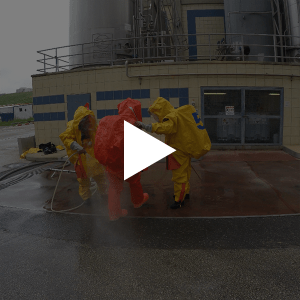1000 5th Ave, New York, NY 10028, United States
6th & Constitution Ave NW, Washington, DC 20565, United States
Don't Miss Out
Venue: 6th & Constitution Ave NW, Washington, DC 20565, United States
Seats Remaining: 9
Venue: 6th & Constitution Ave NW, Washington, DC 20565, United States
Seats Remaining: 5
Book Your Spot
www.csem.com offers safety training classes in the Globally Harmonized System (GHS) from the United Nations as a way to classify and label hazardous chemicals. OSHA used this system as the basis for a major rewrite of the Hazard Communication Standard and www.csem.com bases their course work on this criteria.
See: https://www.osha.gov/dsg/hazcom/global.html for more specific information by OSHA on this programs changes and how to implement it at your facility.
OUTLINE:
1. OBJECTIVES:
- To assure that the employee is made aware of the danger of hazardous materials/chemicals in the workplace.
- To assure that the employee is made aware of how such materials/chemicals affect his/her body.
- To assure that the employee learns how to recognize through labeling the hazard categories of materials/chemicals.
- To assure that the employee learns to interpret the Safety Data Sheet (SDS).
- To assure that the employee learns how to protect himself/herself from hazardous materials/chemicals.
2. MODES OF ENTRY INTO THE BODY:
- Inhalation–Breathing
- Ingestion–Entering through the mouth
- Absorption–Contact with exposed body areas
- Contact–As above (Corrosives)
- Once in the body, many materials/chemicals attack vital organs
- Attack can be long or short term, but the results can be the same
3. EFFECTS:
- Carcinogenic–Cancer
- Toxic–Poison the organs
- Flammable–Burns
- Reactive–Explosion, burns, or toxic fumes leading to injury or death
- Cryogenic–Freezing or frostbite of body parts
- Corrosive–Destruction of human tissue
- Mutagenic–Damage to reproductive processes and fetus
4. RECOGNIZING THE HAZARD:
- The NFPA Hazard Identification System
- Health–Blue
- Flammability–Red
iii. Reactivity–Yellow
- Others–Colorless
- The numerical rating system
- Product labeling by manufacturer
- Display of labels
- Display of signs
5. SAFETY DATA SHEETS:
(OSHA standard format)
Section 1, Identification includes product identifier; manufacturer or distributor name, address, phone number; emergency phone number; recommended use; restrictions on use.
Section 2, Hazard(s) identification includes all hazards regarding the chemical; required label elements.
Section 3, Composition/information on ingredients includes information on chemical ingredients; trade secret claims.
Section 4, First-aid measures includes important symptoms/ effects, acute, delayed; required treatment.
Section 5, Fire-fighting measures lists suitable extinguishing techniques, equipment; chemical hazards from fire.
Section 6, Accidental release measures lists emergency procedures; protective equipment; proper methods of containment and cleanup.
Section 7, Handling and storage lists precautions for safe handling and storage, including incompatibilities.
Section 8, Exposure controls/personal protection lists OSHA’s Permissible Exposure Limits (PELs); Threshold Limit Values (TLVs); appropriate engineering controls; personal protective equipment (PPE).
Section 9, Physical and chemical properties lists the chemical’s characteristics.
Section 10, Stability and reactivity lists chemical stability and possibility of hazardous reactions.
Section 11, Toxicological information includes routes of exposure; related symptoms, acute and chronic effects; numerical measures of toxicity.
Section 12, Ecological information
Section 13, Disposal considerations
Section 14, Transport information
Section 15, Regulatory information
Section 16, Other information, includes the date of preparation or last revision
- REVIEW


























